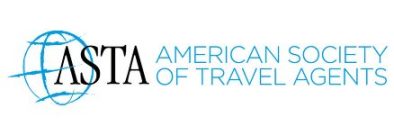Coronavirus travel advice
Considering travel during the pandemic? Take precautions to protect yourself from COVID-19.
Wide-spread vaccination holds promise for ending the coronavirus disease 2019 (COVID-19) pandemic, but it won't happen overnight.
In the meantime, continue taking precautions to protect yourself and others, especially if you must travel. Be sure to check and follow all safety requirements.
Before you travel
As you think about making travel plans, consider these questions:
- Is COVID-19 spreading where you live or at your destination? The more cases in your community or at your destination, the more likely you are to get and spread COVID-19 during travel.
- Are you at increased risk for severe illness? Anyone can get COVID-19, but older adults and people of any age with certain medical conditions are at increased risk for severe illness from COVID-19.
- Do you live with someone who's at increased risk for severe illness? If you get infected while traveling, you can spread the virus to the people you live with when you return, even if you don't have symptoms.
Travel and testing
Testing before and after travel can reduce the risk of spreading COVID-19. The U.S. Centers for Disease Control and Prevention (CDC) recommends getting tested with a viral test one to three days before your trip. Delay travel if you're waiting for test results. Keep a copy of your results with you when you travel.
Repeat the test three to five days after your trip. Even if you test negative, reduce nonessential activities for seven days. If you don't get tested, reduce nonessential activities for 10 days.
If at any point you test positive, stay home. Immediately isolate yourself and follow public health recommendations.
Stay safe when you travel
In the U.S., you must wear a face mask on planes, buses, trains, and other forms of public transportation. The mask must fit snugly and cover both your mouth and nose.
The CDC recommends following these steps to protect yourself and others when you travel:
- Maintain a distance of 6 feet (2 meters) between you and others as much as possible.
- Avoid contact with anyone who is sick
- Limit contact with frequently touched surfaces, such as handrails, elevator buttons and kiosks. If you must touch these surfaces, use hand sanitizer or wash your hands afterward.
- Wear a cloth face mask.
- Avoid touching your eyes, nose and mouth.
- Cover coughs and sneezes.
- Clean your hands often. It's especially important after going to the bathroom, before eating, and after coughing, sneezing or blowing your nose.
- Wash your hands often with soap and water for at least 20 seconds.
- If soap and water aren't available, use a hand sanitizer that contains at least 60% alcohol. Cover all surfaces of your hands and rub your hands together until they feel dry.
Check local requirements and restrictions
Some state, local and territorial governments have requirements, such as requiring people to wear masks and requiring those who recently traveled to stay home for up to 14 days. Save yourself unpleasant surprises and delays by checking for restrictions at your destination and anywhere you might stop along the way.
State and local health department websites are your best resource. Keep in mind that restrictions can change rapidly depending on local conditions. Check back for updates as your trip gets closer.
Air travel
Because of how air circulates and is filtered on airplanes, most viruses don't spread easily on flights. However, crowded flights make social distancing difficult. Plus air travel involves spending time in security lines and airport terminals, which can bring you in close contact with other people.
The CDC and the Federal Aviation Administration (FAA) have issued guidance to help airlines prevent the spread of the coronavirus. As a result, most major airlines in the U.S. require that crews and passengers wear cloth face coverings. To see what specific airports and airlines are doing to protect passengers, check their websites.
The Transportation Security Administration (TSA) has increased cleaning and disinfecting equipment and surfaces at screening checkpoints. If you haven't flown since the pandemic began, you'll notice some changes:
- TSA officers wearing masks and gloves, and practicing social distancing.
- TSA officers changing gloves after each pat-down.
- Plastic shields at document checking podium, bag search and drop off locations.
Also be aware that the TSA has made a number of changes to the screening process:
- Travelers may wear masks during screening. However, TSA employees may ask travelers to adjust masks for identification purposes.
- Instead of handing boarding passes to TSA officers, travelers should place passes (paper or electronic) directly on the scanner and then hold them up for inspection.
- Each traveler may have one container of hand sanitizer up to 12 ounces (about 350 milliliters) in a carry-on bag. These containers will need to be taken out for screening.
- Food items should be transported in a plastic bag and placed in a bin for screening. Separating food from carry-on bags lessens the likelihood that screeners will need to open bags for inspection.
- Personal items such as keys, wallets and phones should be placed in carry-on bags instead of bins. This reduces the handling of these items during screening.
Be sure to wash your hands with soap and water for at least 20 seconds directly before and after going through screening.
Car travel
Air travel might not be for you. You may prefer to drive, which also gives you more control over your environment. You'll still need to be smart about any stops you make, but that just takes some planning.
Here are things to consider before you hit the road:
- Plan to make as few stops as possible, but stop driving if you become drowsy.
- Be sure to pack cloth face masks, hand sanitizer and disinfectant wipes in an easily accessible spot so that you can use them during the trip as necessary.
- Prepare food and water to take on the trip. Consider including nonperishable items to tide you over in case access to restaurants and grocery stores is limited.
- When you need to get gas, use a disinfectant wipe on handles or buttons before you touch them. After fueling, use hand sanitizer. And when you get to where you're going, use soap and water to wash your hands for at least 20 seconds.
- If you choose to pick up a meal on the road, opt for restaurants that offer drive-thru or curbside service.
Other ground transportation
If you travel by bus or train, be aware that sitting or standing within 6 feet (2 meters) of others for a prolonged period can put you at higher risk of getting or spreading the coronavirus. Follow the precautions outlined above for protecting yourself during travel.
Even if you fly, you may need transportation once you arrive at your destination. You can investigate car rental options and their disinfection policies on the internet. If you plan to stay at a hotel, check into shuttle service availability.
If you'll be using public transportation, maintain social distancing, wear a mask, and use hand sanitizer or wash your hands after reaching your destination. If you plan to use a ride-hailing service, don't sit in the front seat near the driver.
Hotels and other lodging
The hotel industry recognizes that travelers are concerned about the coronavirus and safety. Check any major chain's website for information about how it's protecting guests and staff.
Some best practices include:
- Enhanced cleaning procedures
- Social distancing measures
- Masking of staff and guests
- Contactless payment
- Protocol in case a guest becomes ill, such as closing the room for cleaning and disinfecting
Vacation rental websites, too, are upping their game when it comes to cleaning. They're highlighting their commitment to following public health guidelines, such as using masks and gloves when cleaning, and building in a waiting period between guests.
Once you arrive at your room or rental, disinfect high-touch surfaces, such as doorknobs, light switches, countertops, tables, desks, phones, remote controls and faucets. Wash plates, glasses, cups and silverware (other than prewrapped plastic items) before using.
Make a packing list
When it's time to pack for your trip, grab any medicines you may need on your trip and these essential safe-travel supplies:
- Cloth face masks
- Alcohol-based hand sanitizer (at least 60% alcohol)
- Disinfectant wipes (at least 70% alcohol) for surfaces
- Thermometer
Considerations for people at increased risk
Anyone can get very ill from the virus that causes COVID-19, but older adults and people of any age with certain medical conditions are at increased risk for severe illness. Conditions that increase your risk include cancer, chronic kidney disease, chronic obstructive pulmonary disease, serious heart problems, weakened immune system, obesity, pregnancy, sickle cell disease, smoking, and type 2 diabetes
Travel increases your chance of getting and spreading COVID-19. Staying home is the best way to protect yourself and others from COVID-19. If you must travel, talk with your doctor and ask about any additional precautions you may need to take.
Remember safety first
Even the best-laid plans may need to be set aside when illness strikes.
Stay home if any of your travel companions or you:
- Are sick or think you have COVID-19 even if you don't have symptoms.
- Have been around someone with suspected or diagnosed COVID-19 in the past 14 days even if that person didn't have symptoms.











